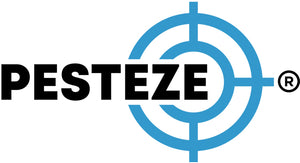UNDERSTANDING THE ROLE OF ANIMAL SHELTERS

UNDERSTANDING THE ROLE OF ANIMAL SHELTERS
SUMMARY
Animal shelters play a vital role in protecting, rehabilitating, and rehoming animals in need. They serve as safe havens for stray, abandoned, surrendered, and abused pets, while also educating the public and supporting community health. By offering medical care, adoption services, and outreach programs, shelters help reduce overpopulation, prevent cruelty, and promote responsible pet ownership. Understanding their function empowers communities to support humane treatment and make informed decisions about animal welfare.
FEATURES
-
Rescue and Intake Services: Shelters provide immediate refuge for animals found stray, surrendered by owners, or rescued from abuse.
-
Medical Treatment and Care: Many shelters offer vaccinations, spay/neuter procedures, and treatment for injuries or illnesses.
-
Adoption and Foster Programs: Shelters match animals with permanent homes and rely on foster families to provide temporary care.
-
Public Education and Outreach: Shelters teach responsible pet ownership, animal safety, and humane practices through workshops and events.
-
Population Control Initiatives: Through sterilization programs, shelters help reduce unwanted litters and lower euthanasia rates.
-
Emergency and Legal Support: Shelters assist in cruelty investigations, disaster response, and enforcement of animal protection laws.
GUIDE DESCRIPTION
Animal shelters are more than just holding facilities—they are dynamic community resources that serve both animals and people. Their primary mission is to provide safe, temporary housing for animals in crisis, including those who are lost, abandoned, abused, or surrendered by owners. Upon intake, shelters assess each animal’s health and behavior, offering medical treatment, vaccinations, and sterilization to prepare them for adoption or foster care.
Adoption programs are a cornerstone of shelter operations. Staff and volunteers work diligently to match animals with suitable homes, often conducting interviews and home checks to ensure compatibility. Foster programs extend this care by placing animals in temporary homes, giving them time to heal or adjust before permanent placement.
Shelters also play a key role in public education. They host workshops, school visits, and community events to promote responsible pet ownership, teach humane treatment, and raise awareness about animal welfare issues. These efforts help reduce neglect and abandonment while building empathy across generations.
Population control is another critical function. By offering low-cost spay/neuter services, shelters help curb overpopulation, which in turn reduces the number of animals euthanized due to lack of space or resources.
In emergencies, shelters often collaborate with law enforcement and disaster response teams. They may assist in rescuing animals from cruelty cases, hoarding situations, or natural disasters, ensuring both legal compliance and compassionate care.
Supporting your local shelter—whether through adoption, volunteering, or donations—strengthens the entire community and gives vulnerable animals a second chance at life.
- Amy Chang


Comments 0